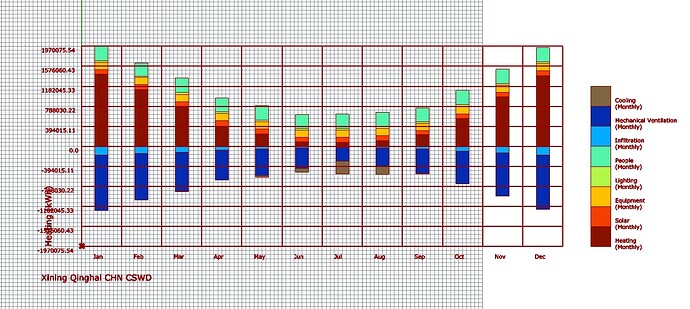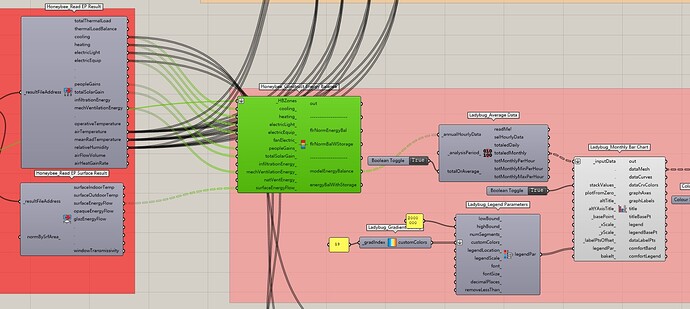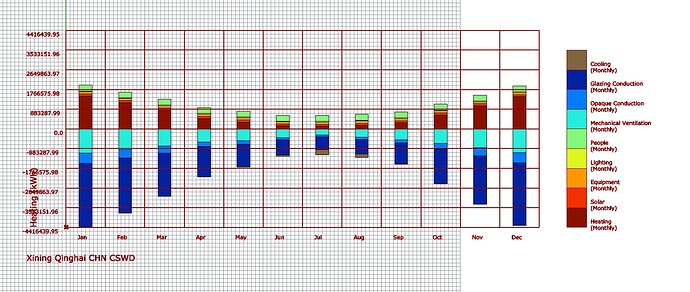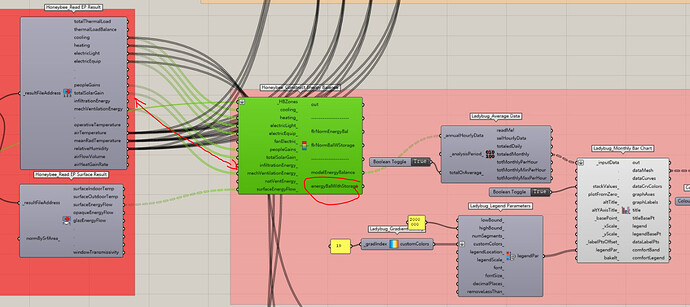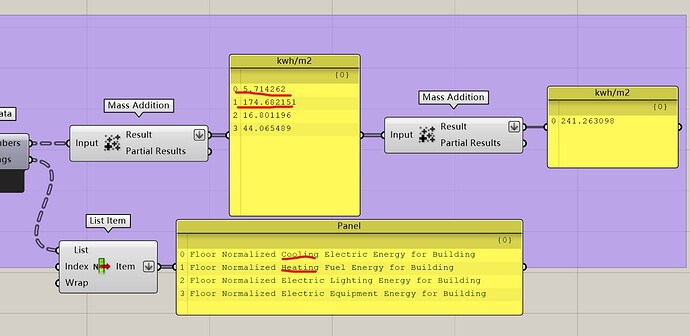What is the cause of the imbalance between the gains and losses in energy consumption?
You didn’t add the surface energy flows to the balance component. You’ll also want to show thermal storage to get it to balance.
S
Thank you very much for your help ,but when I add the surface energy flows to the balance component,the heat gain and the heat loss seem to be more inconserved and the difference gets biggert 
Do you know what the reason is??
In this latest version you’re missing the Infiltration input. I also recommend using the energyBalWithStorage output, it adds a bit more detail to the chart. Also, are you using an ideal loads air system?
I am sorry that I am a beginner of HB and I have not found the battery energyBalWithStoragefor the output you mentioned
As for the air conditioning system, I originally planned to set it, but it has not been added successfully, so I use the default setting for the cooling and heating schedule,is it an ideal loads air system?
The energyBalWithStorage is just a different output on your Energy Balance component, that you can insert into the Ladybug Average component. That represents the energy occupying the thermal mass of your building (i.e thermal storage), and is usually needed to obtained a balanced chart.
The ideal loads air system is the default system in Honeybee, and is required to construct a Energy Balance chart (if you search the forums you can find discussions of why this is the case).
So as long as you add the infiltration, and the thermal storage, you should get a balanced chart. If not, I think you should share your script so we can debug it. Your values do look weird, so even if it’s balanced you should study your chart carefully to see if it makes sense.
I’m sorry for replying so late. The energy consumption of heating is much larger than that of refrigeration, which is abnormal in my opinion. The data does look strange
xi ning 3.gh (1.1 MB)
I have sent the file. Thank you very much for your help!!
There’s a lot of errors and complexity in the model in that GH file which is preventing me from even running your file. Part of it might be a unit conversion error, but there’s other issues as well.
-
What units are you using? I would suggest sticking to Rhino model units of meters. Right now I’m getting a one massive thermal zone, with no splitting into floors or perimeter/core areas.
-
The model is very far away from the origin, which can cause numerical precision errors when calculating anything related to the building geometry. This may be related to the unit conversion issue, but even if you are using different units, it’s safer to just place your building at the origin point and avoid potential scaling issues like this.
-
The geometry is unnecessarily complex. For example your roof surface is composed of multiple polygons, when it could be simplified into a single flat brep. Those subtle geometric facets won’t make a huge impact on your resulting energy loads. Having a lot of precise, custom geometry will also increase the chances of numerical precision errors due to the displacement from the origin (from my previous point). The Honeybee wiki has more information on how to simplify your design model for energy modeling.
-
The model has a lot of custom inputs. There’s nothing wrong with this, but the chances of user-introduced error gets higher when you do this. I strongly recommend beginning with a simpler model and relying on Honeybee defaults at first. Once you can confirm that the energy balance (and other HB tools for QA/QC) are reporting a sensible model, you can start increasing the complexity iteratively.
Also, next time can you make sure to simplify your GH model before attaching it on the forums for checking. It’s very hard to check the energy balance when there’s additional daylighting/comfort/etc models in the script. Again, I would argue this kind of complexity may also be introducing unexpected error somewhere in your script, and would recommend validating the correctness of a simple, standalone energy model before moving on to other analysis.
Thank you very much for your patience. I will pay attention to it next time。
